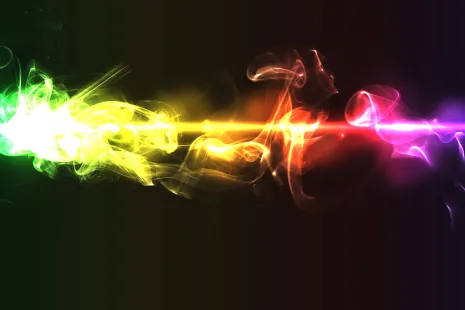Temperature and colour of light not only for crystal chandeliers
Added 18.6.2021 10:52.00
Daylight is ideal but unfortunately we can’t always rely on it. That’s why we use artificial lighting. Do you factor into your decision the temperature and colour of light when you choosing your lighting? Allow us to explain why you should definitely take these factors into account, and consider the temperature and colour of light when choosing your crystal chandelier.
Why you should consider the temperature and colour of light
The temperature of light influences your emotions and the way your body works, as well as your overall impression of a room. Cold light stimulates the human organism – it decreases fatigue, helps with concentration, and increases effectivity at work. It's appropriate at work or school, but not in the bathroom when you've just filled your bathtub and wish to relax after an exhausting day. Here, warm light is more desirable. It evokes pleasurable, relaxing emotions and feels more cozy.
Besides influencing our organism, the colour of light determines how you perceive the space and how colours, materials and accessories look and stand out. This fact should not be overlooked when choosing the right lighting for each room. Warm light tends to be more orange and even red, while cold light tends to have blue tones. If your interior is made of wood and you have light bulbs of both warm and cool light, try to compare them both. You'll see that choosing a warm light is an absolute 'must'.
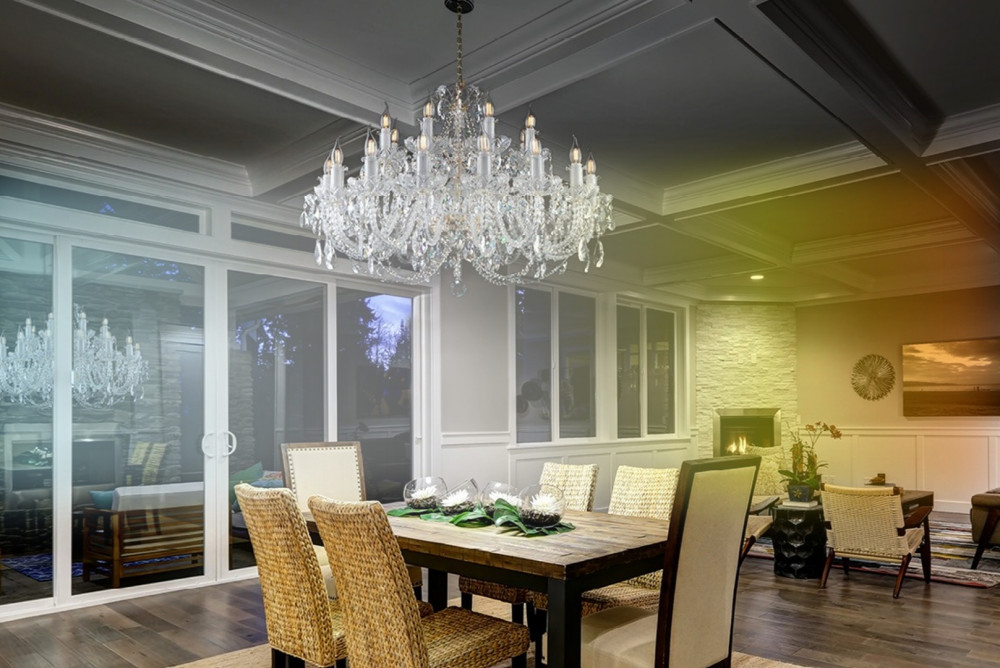
Follow the chromaticity temperature
The temperature of colour is known as its chromaticity temperature. It's measured in kelvin (K). The more kelvins you have, the cooler the light. In contrast, less kelvins means a warmer and also slightly darker light. To give you an idea, daylight at noon is 5,000–7,000 kelvin; when the sky is absolutely clear it can be over 10 thousand kelvin. LED bulbs are usually 2,200–7,000 kelvin.
Each manufacturer labels the colour and temperature of light differently. That's why it's best to go by the information on the amount of kelvins, which must be stated on the bulb. Determining an exact value is difficult – usually, you'll see the kelvin range of the bulb. Generally, bulbs and lighting can be divided into three categories – warm white, white and cold white.
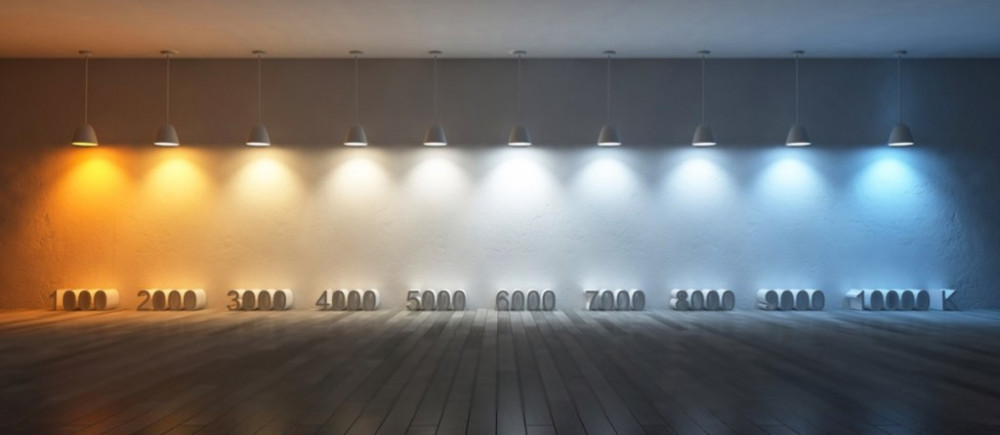
Warm White (approx. 2,200–3,300 K): Lighting with a yellow and orange light. It resembles candlelight or firelight. The colour is pleasant, cozy, and relaxing. It's suitable for rooms in which you want to evoke a relaxing atmosphere.
White (approx. 4,000–5,000 K): Sometimes referred to as 'natural light'. The colour resembles daylight. Colour-wise, these bulbs have a minimal influence on the environment, and evoke pleasant, harmonious emotions.
Cool White (approx. 5,500–8,000 K): A sharp, white light with blue tones. This colour noticeably brightens up the surrounding environment. As the chromaticity temperature rises, the light might be too dazzling for some people.
Extreme limits (600-2,200 K, 8,000-16,000 K): These values are not very common in artificial light. The limit of the scale is considered to be 600 K, which can be described as the colour red. At the other end of the spectrum, one can encounter values of 9,000 K (some LED lamps), 14,000 K (UV tubes used in solariums) or 20,000 K (UV-C sterilization lamps) for artificial lights. In the open air, you may be surprised by the value of up to 12,000 K that blue sky can achieve (and is comparable to the blue light produced by welding).
What temperature of artificial lighting should I choose for different rooms?
Lamps with a warm-coloured light are especially suitable for bathrooms, bedrooms and children's rooms. They usually make the best solutions for living rooms as well. All the above-mentioned rooms are basically intended for relaxation or undemanding activities. As far as public places are concerned, warm lighting is suitable for restaurants, hotels, and wellness centres.
Neutral, white light can be used in kitchens, dining rooms, corridors or study rooms. It can be used in places where light resembling daylight is desirable. Usually, this means department stores, shopping centres, trade fair halls, and industrial premises.
Cool white is suitable for offices, open space premises, storage halls, garages, and workshops. This type of light will increase your work effectivity and stimulate your organism. That is why you should avoid it at least one hour before you go to bed.
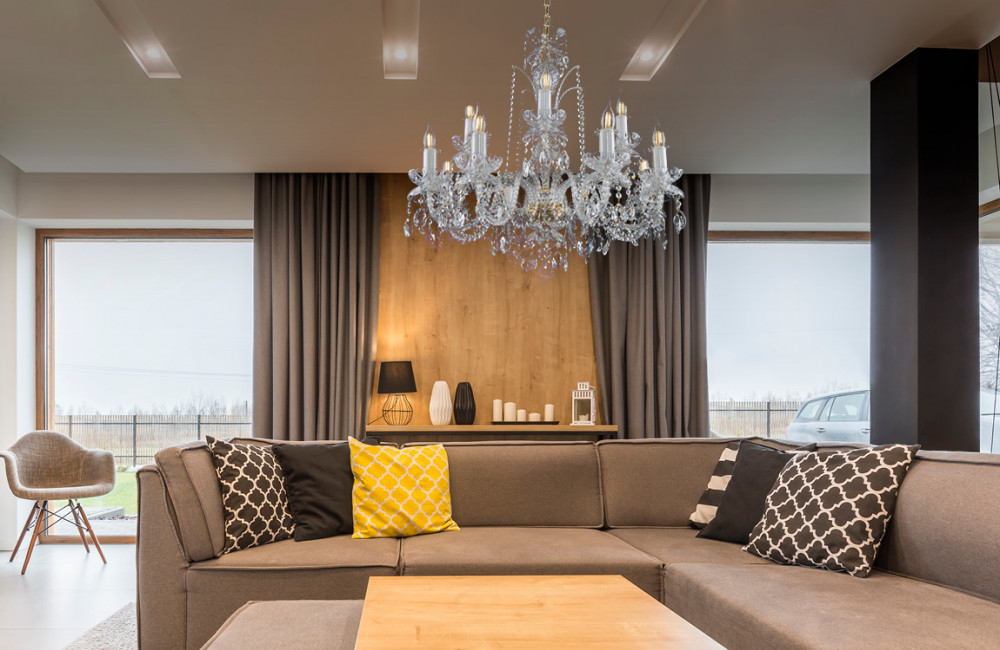
The temperature of light and crystal chandeliers
One of the reasons why people buy crystal chandeliers is the unmistakable glitter and dazzling reflection. What is the temperature and colour of light from a crystal chandelier? Crystal and the way it's cut is designed to maximally reflect any light. In other words – when illuminating crystal, cool light will bring out the cool tones, and warm light will bring out the warm ones.
The degree of reflection will be powerfully affected by whether the light illuminating the crystal is daylight or artificial light. Crystal reflects the broadest range of the colour spectrum in daylight, when the sun is out. This causes beautiful rainbow-coloured reflections on walls and ceilings. Nonetheless, in this respect LED technology is developing quickly. For example, light bulbs with a CRI 90 (Colour Rendering Index) closely resemble daylight.
And what is ArtCrystal Tomeš's recommendation?
The vast majority of customers choose warmer lighting colours. Warmer colours are intrinsically linked to traditional chandeliers, which many years ago were lit by the light of a burning candle. With more modern chandeliers that are fitted with LED lights, you can now let your imagination run wild. We deliver ArtCrystal Tomeš crystal chandeliers without lamps – it is up to you and your discretion (we are always ready to give you a helping hand or an expert opinion) what light temperature you choose for your chandelier. For each chandelier we indicate which bulbs of what wattage are recommended for the model.
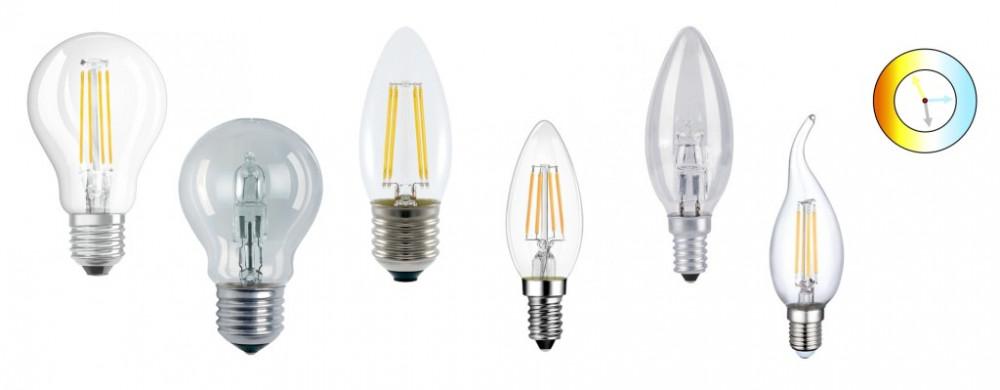
We recommend traditional clear glass bulbs. These, unlike plastic or milk-coloured bulbs, do not diminish the lustre of the crystal when the chandelier is lit. Whether the light source inside the bulb is based on molten tungsten filament, LED technology or even a so-called filament bulb is up to you. You just need to choose a bulb with a suitable base – the chandeliers are fitted with standardised threads for bulbs with E14 or E27 bases.
We wish you a successful selection so that your home is also tuned to the tones that suit you.







































